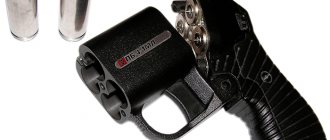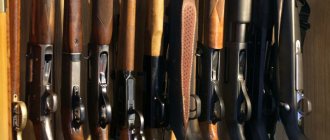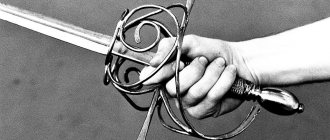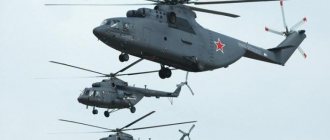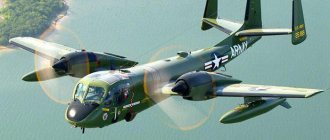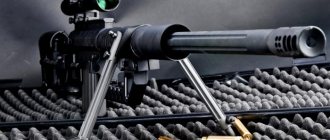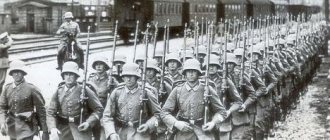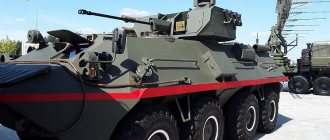The U.S. Army Combat Capabilities Development Command (CCDC) has demonstrated its vision for the “Soldier of the Future.” No matter what pictures the futurists painted for themselves, the Americans did without unnecessary fantasy. The published program is clear and in most elements it looks quite feasible. Izvestia looks into the details.
Secret terminators: US accused of creating biological weapons
What's Hidden Behind the Pentagon's "Revolutionary Agricultural Research Program"
Equipment of the Russian army
There is no single form for all types of combat and training work. Therefore, specialists have developed several combat kits for different purposes, as well as the usual all-season uniform for field tasks.
Combat Kits
In the Russian army there are several narrow-profile kits designed for different purposes. Below is a list of the most basic ones and their applications:
- "Sagittarius". Equipped with a large amount of equipment that allows you to maintain constant contact with headquarters.
- "Fighter-21". Increases overall endurance.
- "Ratnik-1". Increases overall effectiveness on the battlefield.
As you can see, all these options are suitable for individual cases. For most field tasks, a conventional VKBO is used, which came into operation in 2013.
Features of VKBO
The all-season basic uniform set consists of 23 items of clothing, including summer socks and insulated vests.
A distinctive feature of the multilayer form is its adaptability to the harshest natural conditions. The suit can withstand from -40 to +15 degrees Celsius. For higher temperatures there is a summer option. The VKBO includes:
- Summer suit.
- Winter suit.
- Windbreaker.
- Insulated vest.
- Demi-season suit.
- Wind and waterproof suit.
- Short lightweight underwear – 2.
- Long lightweight underwear – 2.
- Cap.
- Hat with ear flaps.
- Balaclava.
- Scarf.
- The mittens are insulated.
- Baul.
- Fleece underwear.
- Winter shoes (from -40 to -10 degrees Celsius).
- Summer shoes (from -10 to +15 degrees Celsius).
“Digital” is used as camouflage. Total weight – 10.5 kg.
Features of protective equipment
The 6B47 uniform military armored helmet is capable of protecting against shrapnel that flies at speeds of up to 630 m/s. In addition, it completely protects against nine-millimeter bullets from a Makarov pistol. Weighs about one kilogram.
The 6B45 body armor has lower strength indicators and is capable of protecting against fragments flying at speeds of up to 550 m/s. There is also an assault version of the body armor with metal plates and increased strength. The total weight of the body armor is 7.5 kg.
US Army soldier's personal combat equipment
The American soldier today, as the command of the US Armed Forces believes, is the most trained and has the best equipment in the entire history of the state, and the army itself is the strongest in the world. The military personnel as a whole are viewed as a “weapon system” and their individual combat equipment is given special importance. Currently, it consists of individual small arms and bladed weapons, body armor, a helmet with night vision goggles, an intercom radio, a WMD protection kit, a camouflage uniform, boots, knee and elbow pads, a waterproof suit, modular equipment, a sleeping bag and individual rations, ready for use.
The soldier's personal small weapon is a 5.56 mm M4 carbine. It is a compact version of the M16A2 automatic rifle with a retractable four-position buttstock. The length of the carbine is 75.7 cm, the magazine capacity is 30 rounds. The M9 bayonet on the Ml6 series rifle is used as a bayonet, as well as a hand-held edged weapon and a utility knife (complete with a sheath, it allows for wire cutting and can be used as a saw).
The bulletproof vest provides effective protection against bullets and small fragments. It consists of a Kevlar vest with detachable neck and groin guards, as well as removable titanium plates. Without them, the body armor provides protection against a 9 mm pistol bullet, and with them, against a 7.62 mm rifle bullet. The weight of the body armor is 7.48 kg.
The helmet (PASGT) provides head protection. It is made of multi-layer Kevlar-23 using phenol/PVB resin. Available in five sizes. Moreover, its weight, depending on the size, can range from 1.45 to 1.89 kg. The kit includes a fabric cover to match the color of the uniform being worn.
AN/PVS-7 night vision goggles are mounted on a helmet and are used when moving, driving a car and performing equipment maintenance work in low light conditions. With their help, you can detect a person in starlight at a distance of up to 150 and in moonlight (at a quarter strength) - up to 350 m. The mass of the glasses is 0.68 kg.
The intercom allows you to maintain communication between platoon soldiers who are on site at a distance of up to 700 m. The squad commander has the ability to conduct radio communications with all subordinates simultaneously on a dedicated channel. The device kit includes: transceiver, rechargeable power supply, headphones and microphone. Weight 0.64 kg. The equipment of an American soldier also includes a set of protection against weapons of mass destruction. It includes an M40 gas mask, which purifies contaminated air through an external filter box (if necessary, it can be installed on both the left and right sides of the mask). Weight 1.3 kg. In addition, it includes a general-purpose lightweight integrated protective suit. (JSLIST), common for the US Armed Forces. It is designed to protect against damaging factors of chemical and biological weapons. JSLIST includes a filter suit (jacket and trousers) worn over the field uniform, protective boots and gloves. The weight of the set is about 3 kg.
The field uniform is four-color, camouflaged to resemble a wooded area. Used when conducting combat operations in temperate climate zones. The set includes a loose jacket with an unbutton collar, chest and side pockets with flaps, as well as trousers with four standard pockets (two internal and patch pockets) with flaps. The uniform is made of special fabric containing up to 50 percent. cotton For desert and semi-desert conditions, camouflage is produced, the colors of which are dominated by yellow and beige tones. Shoulder straps are not provided on the field version of the uniform; insignia, made in muted colors, are placed on the collar of the jacket: on the right side - indicating military rank, on the left - identifying membership in a specific branch of the military or service. The emblem (identification mark) of the unit or part is located on the upper left sleeve.
High-top boots are made of soft genuine leather with water-repellent impregnation. In addition, their design also ensures water resistance. Military personnel serving in temperate climates wear black boots with a green uniform, and beige boots in desert conditions. The waterproof suit (IRS) includes a camouflage cape and pants made of membrane fabric with water-repellent impregnation. A fastening hood is also provided. The trousers have zippers, allowing you to put them on and take them off without taking off your shoes. The weight of the suit is 1.31 kg. A plastic plate with the serviceman's name is attached to the right chest of the cape. Elbow and knee pads provide protection to the corresponding parts of the body when a soldier crawls over rocky terrain. They are shells made of high-density black polyethylene, quickly attached to belts made of camouflage fabric, lined with polyester padding, between which there are three-segment polyethylene foam pillows. The mass of these equipment items is 0.82 kg.
Modular combat tactical and cargo equipment (MOLLE) consists of a patrol, raid backpacks, as well as a tactical combat vest with interchangeable quick-release pouches for magazines of individual small arms, hand grenades and other equipment items. The waist belt secures both the vest itself and the patrol backpack. If necessary, you can quickly get rid of the latter. All elements of MOLLE equipment (total weight 7.66 kg) are made of lightweight, durable camouflage fabric.
The modular sleeping bag (MSBS) is made according to the “one inside the other” principle: the insulated version is inserted into the so-called “patrol” warm-weather one, resulting in effective protection from the cold. The set is also complemented by a heat-insulating mat. There is a packing bag for storing and carrying it. Total weight 4.77 kg. Meal rations (MRE) are a standard military ready-to-eat option (contains approximately 1,300 calories). Shelf life guaranteed, 100 percent. safety - six months (80 percent - up to three years). In 1993, 70 new components were included in the ration that had existed since the 80s. At the same time, 14 of the least popular dishes were removed from the range. But their number has increased (for example, four vegetarian ones have been added). The mass of an individual ration is 0.73 kg.
Individual combat equipment of a US Army soldier: 1. Helmet with night vision goggles 2. Combat tactical equipment 3. Body armor 4. Elbow pad 5. Bayonet 6. Knee pad 7. Intercom microphone 8. Cargo equipment 9. Camelback aqua system 10. Carbine 11. Gas mask 12. Boots (high-top)
Individual combat equipment is constantly being improved, and every three years the wishes of brigade commanders of the ground forces are considered to change and improve it, taking into account the experience of combat and operational training. First of all, the results of the use of troops in conflicts in the Balkans, Afghanistan and Iraq are taken into account. Currently, in particular, two new versions of helmets, three - boots, three - field uniforms, body armor, socks and gloves, modular combat tactical and cargo equipment, warm underwear, knee and elbow pads, knitted woolen caps, an aqua system, a universal tool, as well as a monocular night vision device, a machine gun optical sight, a laser aiming point indicator, an optoelectronic sight, sunglasses, windproof and dustproof glasses. Also being tested are an advanced combat helmet used by Special Operations Command, a modular integrated communications helmet (MICH) with a built-in transceiver, microphone and telephone, and a similar helmet with a head-mounted display.
Every three to four years, US Army brigade-level combat units receive new equipment, and after five to seven years it is replaced or modernized.
What is included in the equipment of a US soldier?
The review below will talk about universal uniforms for most soldiers. Special units have their own combat kits.
Combat Kits
The main set in the United States Army is the Army Combat Uniform (ACU), which entered service in July 2004. The uniform is designed for field conditions in hot conditions and desert areas. Includes:
- Jacket with five pockets and a stand-up collar. Available in regular and fire resistant versions.
- Double layer pants with two pockets. Available in regular and fire resistant versions.
- Two inch belt.
- Cotton T-shirt.
- Crest.
- Cap.
- Panama hat with MOLLE system and holes for ventilation.
- Brown boots ACB (TW) and ACB (HW), for moderate to hot weather.
- Olive cotton socks.
Apart from this, there is no strict dress code for shoes. Any boots that are comfortable to walk on a hard surface will do. Weight excluding shoes – 700 grams.
Features of protective equipment
Since 1980, the United States has used the Army Personal Armor Protection System, abbreviated PASGT. In 2000, all helmets were modified. They have the same durability and protect against fragments flying at speeds of up to 750 m/s. It is possible to replace metal plates and install side elements.
Comparison of equipment of Russian and American soldiers
Reasons for the differences between American and Russian equipment:
- geographical position;
- technological progress;
- military experience;
- availability of resources.
We will not compare all the uniforms of an ordinary soldier, but only the main parameters.
Focus on climatic conditions
US equipment is primarily aimed at dry and hot terrain, while the Russian military has to adapt to local cold and rain.
Price
The second distinguishing criterion is price. To assemble one “warrior”, you need from $45,000. To build something like this for an American, you need $80,000.
Unloading system
In Russia, the military unloading vest BSh112 is used, which is not compact. The United States abandoned unloading vests in favor of the Molle innovation, which is located on American body armor. However, sometimes MOLLE II US ARMY backpacks with a built-in plastic frame are used.
Optional equipment
In this regard, Russia seriously lags behind a country where innovation is constantly taking place. The US soldier receives tactical gloves, a personal water backpack and special ballistic goggles with removable lenses.
Weight
Russians have to travel longer distances than Americans. Therefore, Russian components are 400-700 grams less than American ones.
Background
1. Terrorist planes crash into the towers of a shopping center in New York. 2. Saddam Hussein's troops march on a square in Baghdad. 3. Saddam Hussein. 4. American aircraft carrier in the Persian Gulf. 5. F-15 fighter in Afghan airspace. 6. NATO troops in Afghanistan. 7. Osama bin Laden. 8. The American president demonstrates the combat power of the US army on television.
In 2001, two commercial aircraft flown by al-Qaeda terrorists crashed into the twin towers of the International Trade Center in New York. After this, President George W. Bush promised to find the heads of the terrorist organizations responsible for this anywhere in the world - and started with Afghanistan, where he defeated the Taliban group.
Bush's next target was Iraq, one of the main oil powers, which was then controlled by Saddam Hussein and with whose troops the Americans constantly had armed clashes. Under the pretext of searching for weapons of mass destruction, which Iraq was prohibited from possessing after the Gulf War, Bush sent in more than 300,000 paratroopers to overthrow the Hussein regime. Later, more than thirty states joined the United States in this war - these allied forces were called the army of the International Coalition in Iraq.
